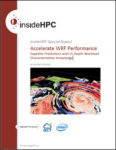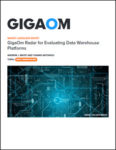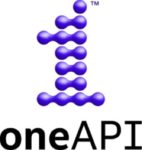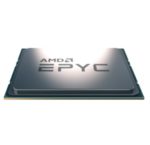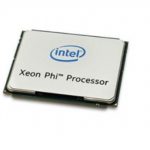A popular application that simulates climate change is the Weather and Research Forecasting (WRF) model. This white paper discusses how QCT can work with leading research and commercial organizations to lower the Total Cost of Ownership by supplying highly tuned applications that are optimized to work on leading-edge infrastructure.
Search Results for: comparison
Samsung, IBM, Tencent Lead AI Patent Race, Europe Lags
Three companies – Samsung, IBM and Tencent – dominate the global AI patent race over the past 10 years, while fierce competition between the U.S, and China overshadows other countries and regions, including the EU. These are the key findings of OxFirst, a specialist in IP law and economics (and spin out of Oxford University), […]
Supercomputing Drug Screening for Deadly Heart Arrhythmias
Using XSEDE supercomputers, scientists have developed for the first time a way to screen drugs through their chemical structures for induced arrhythmias. Death from sudden cardiac arrest causes the most deaths by natural causes in the U.S. estimated at 325,000 per year. “Stampede 2 offered a large array of powerful multi-core CPU nodes, which we were able to efficiently use for dozens of molecular dynamics runs we had to do in parallel. Such efficiency and scalability rivaled and even exceeded other resources we used for those simulations including even GPU equipped nodes,” Vorobyov added.
PRACE Awards 195 Million Core Hours to fight Coronavirus
PRACE is joining the battle against COVID-19 by providing huge computational power – 195 Million core hours – to the first ten projects awarded under the Fast Track Call for Proposals to support the mitigation of the impact of the pandemic. “These projects will provide new lead compounds and targets for further in vitro and in vivo studies of SARS-CoV-2 (virus strain causing coronavirus disease COVID-19), new insights for those drugs currently undergoing clinical studies and also possible new strategies for drug repositioning to treat SARS-CoV-2 infections.”
Azure Looks to Real-Time Derivatives Pricing using Riskfuel AI Technology on GPUs
In this special guest feature, Ian Finder from Microsoft Azure writes that GPU VMs with Riskfuel’s derivatives models based on artificial intelligence are much faster than previous methods. “Using conventional algorithms, real-time pricing, and risk management is out of reach. But as the influence of machine learning extends into production workloads, a compelling pattern is emerging across scenarios and industries reliant on traditional simulation. Once computed, the output of traditional simulation can be used to train DNN models that can then be evaluated in near real-time with the introduction of GPU acceleration.”
New Intel oneAPI DevCloud makes it easier for coders working from home
Today Intel introduced the oneAPI DevCloud to make it easier and more productive for coders currently working from home. “Developing code at home requires access to compute cycles, the latest software development tools, access across diverse hardware architectures—CPUs, GPUs, and FPGAs, and expanded storage capabilities. Through the new oneAPI DevCloud, Intel aims to provide extended access, capacity and support for oneAPI developers working from home.”
PSSC Labs Speeds HPC with AMD EPYC Processors
Today PSSC Labs touted impressive performance on their server lineup powered by AMD EPYC processors. Recently named an AMD Elite Partner, PSSC Labs is developing a unique set of platforms leveraging EPYC processors for AI, Big Data, HPC and IOT. In addition, these platforms will be optimized for computationally extensive workloads in the design & engineering, life science and weather modeling industries.
New Paper Surveys Optimization Techniques for Intel Xeon Phi
A new paper by Dr Sparsh Mittal surveys techniques for evaluating and optimizing Intel’s Xeon Phi. Now accepted in Concurrency and Computation 2020, the survey reviews nearly 100 papers. “Intel Xeon Phi combines the parallel processing power of a many-core accelerator with the programming ease of CPUs. Phi has powered many supercomputers, e.g., in June 2018 list of Top500 supercomputers, 19 supercomputers used Phi as the main processing unit. This paper surveys works that study the architecture of Phi and use it as an accelerator for various applications. It critically examines the performance bottlenecks and optimization strategies for Phi. For example, the main motivation and justification for development of Phi was ease of programming.”
A Survey on Evaluating and Optimizing Performance of Intel Xeon Phi
ntel Xeon Phi combines the parallel processing power of a many-core accelerator with the programming ease of CPUs. Phi has powered many supercomputers, e.g., in June 2018 list of Top500 supercomputers, 19 supercomputers used Phi as the main processing unit. This paper surveys works that study the architecture of Phi and use it as an accelerator for various applications. It critically examines the performance bottlenecks and optimization strategies for Phi.

